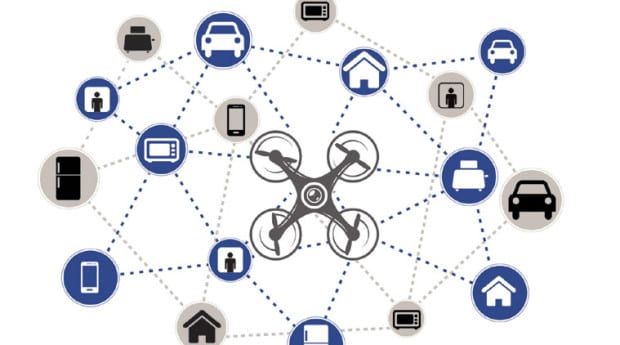By Peter Carbone
The Internet of Things continues to capture the market’s imagination – for good reason. With their ability to deliver detailed information, IoT devices represent the next step in the evolution of the Internet — extending the connections between people to include the products and processes that are important to individuals and businesses. In rushing to connect more “things” to the Internet, product companies find a market seeking innovative solutions and, by every estimate, expecting deployment of tens of billions of connected devices by the end of this decade.
In this fast-evolving IoT universe, the rules for developing these products are changing just as quickly as the market itself. To rise above the noise in the IoT marketplace, companies cannot simply apply development strategies used in previous generations. The new rules for the IoT emphasize a more fluid response to fast-changing opportunities, relying more heavily on software to bring greater innovation.
Increased innovation, shorter time-to-market
The evolving IoT universe offers product companies tremendous opportunities but presents development teams with an inevitable conflict between product complexity and project schedules: On one hand, the market expects that each new product generation extends the previous generation with an innovative set of exciting new features and capabilities. On the other hand, the lifetime of each product generation has shrunk dramatically. Ubiquitous connectivity and rapid consumer interchange through social networks have sharpened traditional product lifecycle curves.
In responding to the opportunities of the IoT, product developers are under continued pressure to surpass the capabilities of the previous generation with more innovative features. For the deeply embedded systems underlying every IoT device design, software already constitutes the greater share of development effort thanks to availability of feature-rich microcontrollers and microprocessors. At the same time, the majority of effort for new generations of products lies in development of new and different software features.
Are product innovation and speedier delivery mutually exclusive? Conventional development strategies have done little to allay concerns that greater product complexity inevitably leads to project delays. For IoT product companies, the harsh reality is that projects are falling further behind in their goal to meet tight delivery schedules. Worse, the length of the delivery delay is growing even as market windows of opportunity continue to shorten. Market demand and competitive pressure promise to accelerate complexity of IoT devices — translating into a greater burden on software developers for meeting tougher requirements in tighter schedules. The ability to respond effectively to growing complexity is critical for market success, yet current development strategies offer little help in meeting project schedules as product complexity rises. For embedded systems underlying IoT devices, greater complexity translates into additional hardware and software components. Studies have also shown that productivity falls as team size grows.
By identifying opportunities for true differentiation in IoT device designs, IoT product companies can respond more effectively to growing product complexity and shrinking project schedules. In serving specific applications, IoT devices will offer markedly different features and capabilities.
The impact of IoT on development
For an industry literally built on custom software development, the concept of licensing software to speed product development represents a significant paradigm shift. Shifting resources to acquire non-differentiated code offers multiple advantages not only during the development phase but throughout the product lifecycle:
-
The availability of a comprehensive ecosystem of tools and software minimizes start-up delays
-
By licensing low-level software, development organizations not only free themselves from the requirement to build those layers but also shift the burden of lifecycle maintenance for that software to the third-party software vendor
-
In providing the interface to underlying hardware, low-level software has often proven a schedule bottleneck when developers need to rewrite portions of this code to scale a system design to more powerful hardware processors; licensed software eliminates this bottleneck.
-
By building on a proven software layers, developers can jumpstart system development to focus more quickly and confidently on differentiated code – ultimately enabling IoT product companies to deliver more innovative solutions more quickly.
The IoT Is Driving Change in Development Strategies
The vision of a deeply interconnected world fundamentally depends on the ability of IoT device developers to build systems able to satisfy customer expectations for feature-rich products. In this emerging marketplace, traditional rules no longer promise success. In-house development of software common to nearly all IoT devices offers little competitive advantage. Embedded development is finding a welcome paradigm shift toward designs built on a combination of licensed code and custom application software. By acquiring rather than building low-level software, IoT development organizations are enabling themselves to focus their efforts on delivering more innovative products more quickly and effectively within shrinking market windows.
The author is Vice President and General Manager of Synergy IoT Platform Business Division, Renesas Electronics Corporation

